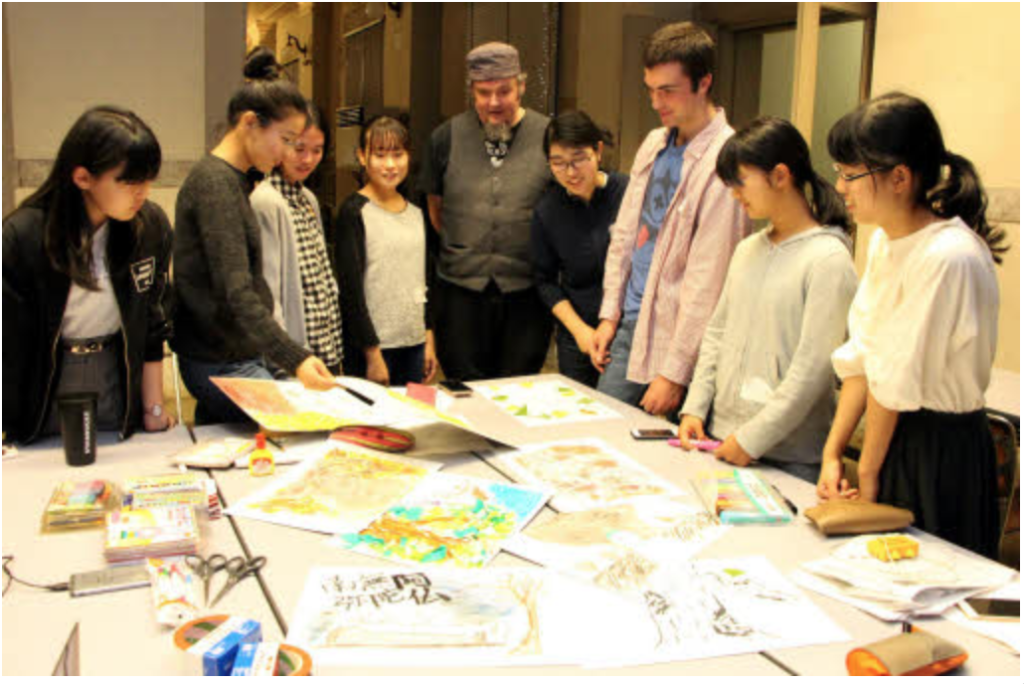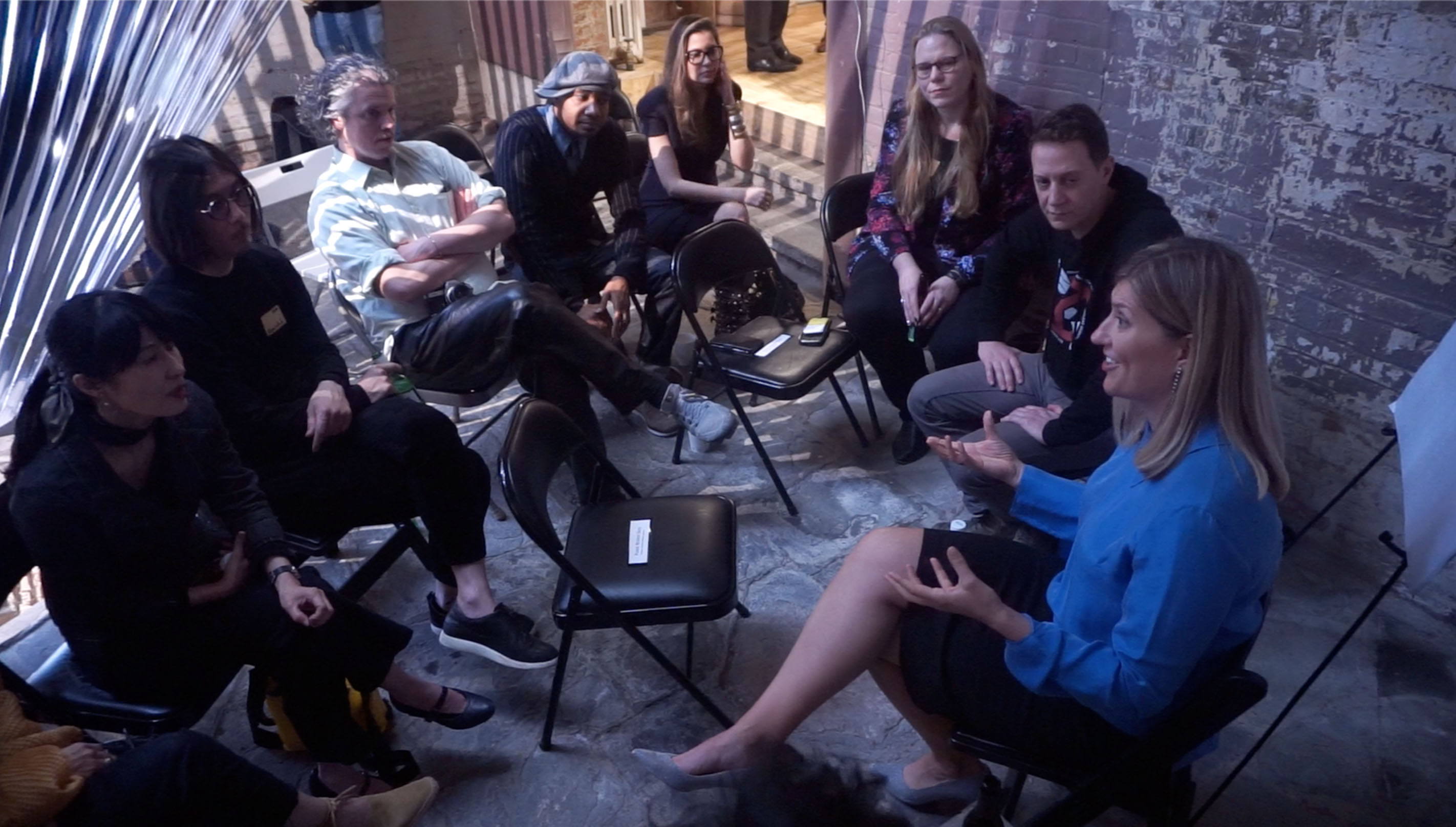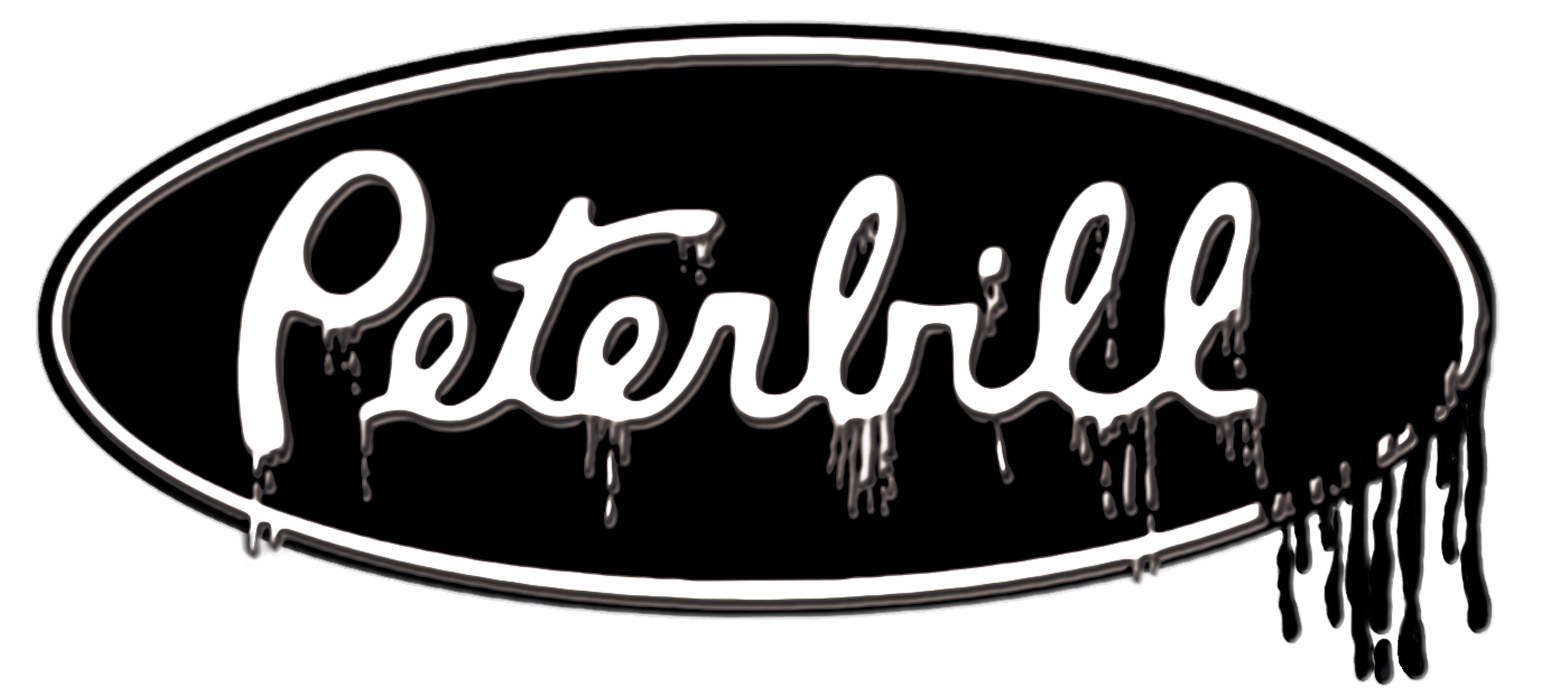Creating media with Youth Journalists from Chugoku Shimbun, largest newspaper in Hiroshima Prefecture. We met with the Priest Toyooka the first week, and he told our group his story of terrible loss, anger, and forgiveness. The Youth Journalists took vignettes from his life, and the second weekend, we animated them in a simple manner using their own cell phones. Instead of using Pro DSLRs, and stop motion software; we utilized cell phone camera and the time-lapse feature built in to newer mobile phones.
Here is the animation, made as part of Zero Project 2019 Hiroshima:
http://www.hiroshimapeacemedia.jp/?post_type=peacemovies&lang=ja&m=2019
Here is the article, google translated, from the paper:

[Junior writer goes] Telling the world of A-bombed trees

If you walk through the center of Hiroshima, you will encounter the “bombed tree” that survived the disaster of the atomic bomb. The appearance of new shoots and strong growth while scratching (scratching) with blast and heat rays has given citizens hope. The Chinese newspaper junior writer visited the A-bombed trees, thought about the story, and made a picture-story show with American artists. We also participated in the activities of a group that gave seeds and seedlings of A-bombed trees overseas. I would like to know more about the A-bombed trees that contain the feelings of peace for Hiroshima citizens.
Ginkgo Theme Making a Picture-story Show
Working with American artists
Hiroshima City, which had been thinking of the abolition of nuclear weapons, registered about 160 trees that had been exposed before the atomic bombing within 2 kilometers from the hypocenter. This includes ginkgo trees in Anrakuji, Ushida Honmachi, Higashi-ku. It was exposed to the grounds at a distance of 2.1 km from the hypocenter, and part of the trunk burned, but now it has grown up with many leaves.
I visited Anrakuji and heard the story from Koji Toseioka (89), a former resident and an A-bomb survivor. The younger brother Junji-san (12) was burnt and turned black, and died in a temple while suffering. The following year after the atomic bombing, Ginkgo sprouting new buds and encouraging the residents around.
I participated in the workshop of the “Zero Project Hiroshima” peace event that was the former Bank of Japan Hiroshima Branch (Naka Ward), and made a picture-story show with this ginkgo as the main character. The event was organized by an American artist, Canon Hershey (42).
Thinking about the scenario, I drew on 8 drawing papers with crayon and brush pen while imagining the scene of the story. The torn origami gave the leaf a three-dimensional effect, and a real ginkgo leaf was pasted to express the lively state of the tree.
I recorded a narration in the voice of a junior writer who had a video shoot of the work until the picture-story show was completed. Filmmaker Peter Bill (49) made it a 6-minute video work. An English version will also be created and Hershey will be performing in New York next spring. I hope that our desire to “realize a world free of nuclear weapons” will be conveyed to adults and children who are not interested in the atomic bomb.
We were in charge
This interview is Kawagishi Shiori, 17 years old, Felix Walsh, 17 years old, Yui Morimoto, 15 years old, Yurina Yuzuki, 15 years old, Yuna Okajima, 15 years old, Kazuha Katsura, 15 years old, Aiyoshi Hayashida, 15 years old Yuno Nakajima, 13 years old, Chihiro Tsuji, 13 years old, Shino Taguchi, 13 years old, Chihiro Yamase, 13 years old were in charge.
(Posted on the morning of November 25, 2019)
[After the interview]
I participated in the Zero Project Hiroshima workshop for the first time and made a picture-story show with the filmmaker Peter Bill. In making a picture-story show, I was able to learn about the present and the past of the bombed trees. I also expressed the color of the atomic bomb using paints. A picture-story show video will be screened overseas and many people will see it, so I think it would be a good opportunity to get to know Hiroshima’s bombed trees. (
Daiichi Morimoto) I was vowed to revenge in the United States, but while I entered university and studied Buddhism, I thought that “respecting the other person is the basis of peace and touching with a kind heart. I came to think that I had to do it. ” I don’t think it’s easy to change the hate you have vowed once. I would like to convey Tozeoka’s idea that respect for the other party is the basis of peace and Toseioka-san’s experiences of exposure. (Naka 2 Yuu Nakajima)
I participated in Zero Project Hiroshima for the first time this time. I made a picture-story show, and I was able to convey the A-bomb experience to people in countries where I couldn’t understand the language through “pictures”. At the time of the presentation, I thought it would be great if I could understand their ideas even a little by playing a video of the work process. During the discussion, I was nervous because I exchanged opinions with people from many countries, but more than that, I was able to enjoy this meaningful time. I would like to join the next time because I want to interact with people all over the world. (1st middle Chihiro Yamase)
By participating in Zero Project Hiroshima this time, I have come to think about how I can communicate more easily to the other party. I think that different countries, languages, and cultures have different ways of thinking and looking at things. I understood that it was important to express what I wanted to convey after understanding that. I thought that my ideas would turn in a better direction by respecting the other’s opinions and listening to their thoughts. It is difficult to communicate, but I think that is the first step to realizing peace, so I want to challenge a lot. (3) Katsura Ichiha)
I was impressed by the participation of the Green Legacy, Hiroshima, and the initiative to collect seeds of A-bombed trees. Ajimi-san said, “Saving a small place and a big place. It ’s just as important. Mr. Ajimi wanted to save many poor people with this activity. In fact, people from various countries participated in this activity. Everyone went eagerly and happily. I felt that it would be meaningful to save everyone. (Chihiro Tsuji 1)
This time, for the first time, I had the experience of expressing the story I heard from the A-bomb survivors with “pictures” rather than sentences, and using it as a picture-story show. Before starting the picture-story show production, I couldn’t easily figure out which scene to use to express what I was seeing, and took more time than expected. In production, I was able to experience a lot of things different from school art classes, using origami to create a three-dimensional effect and using ginkgo leaves, while being conscious of timelapse. I want many people to see this picture-story show and think about peace (Naka 3 Okajima Yuna)
In this picture-story show, I thought that people from all over the world would feel the same if they had different words. Even though the narration was in Japanese, the people who used English were watching it seriously. I was very happy. I don’t have many opportunities to exchange opinions with non-Japanese people, so I would like to talk about peace and nuclear weapons with foreigners. (Naka 3 Hayashida Ai)
By telling the story of what happened at Anrakuji on August 6 from the perspective of the A-bombed trees, we were able to give weight to the story. At first I thought that I would only make a picture-story show, but Bill completed the picture-story show while creating a movie that combines the sound of making a picture-story show and saying “Let’s make a video!”. It was hard because I made it with limited time, but it was very fun. And since the video of making a picture-story show is included in the video, I was making a picture-story show in a bumping performance. It was fresh and fun to make a picture-story show one by one using various techniques by tearing or sticking origami and mixing colors with crayons. Lastly, the sense of accomplishment when the picture-story show we created turned into a narrated video and played in front of the participants with a large projector is still unforgettable. I think the story in this picture-story show should spread all over the world. From this story, it is clear what people lose by war, and I think it tells me how miserable it is to have a war. (High 2 Felix Walsh)
This time, I participated in the picture-story show production for A-bombed trees. At first I felt uneasy about what would happen. However, when I entered the production, I was able to cooperate with each other and carefully draw pictures one by one, so my anxiety disappeared. The production method was also called a time-lapse function of a mobile phone, and I was surprised by the first experience of shooting and showing the process of making it, but it became fun as I proceeded with the work. I will continue to write articles as a junior writer, and I want to find other ways of sending out little by little. (Takagawa Kawagishi Shiori) Through
this zero project and coverage of A-bombed trees, I was able to find out what Toseioka cherishes in living. Mr. Toseioka’s words “Contact with a gentle heart” were impressive. Hate alone does not solve anything. I felt it was important to convey my thoughts while having compassion at any time. Also, in creating a story for a picture-story show, I was able to realize the connection of life by thinking from the perspective of Ginkgo. I want to live so as not to forget the preciousness of life. In order for the incident of the atomic bombing in Hiroshima not to be weathered, it must be handed down to the next generation. The picture-story show is easy to understand and familiar to everyone. So, from now on, I would like to transmit peace in a way that is transmitted to children like a picture-story show. (High 1 Yurina Yuuki)
I remember Nasleen Ajimi’s words, “When you think about the local area, it will be about the world.” Thinking about the local area and acting on it will reach the world and influence it. It can be a small activity that moves the world. Thinking about the big things in the world and thinking about doing things that are familiar to me, I never thought of the opposite. However, I participated in this activity and thought it was true. A small activity to collect the seeds of A-bombed trees will affect the world. I thought it was wonderful. At the same time, I wanted to know more about these activities. I think that many people who are familiar with small things can have a big impact on the world. I also thought it was our generation to do that. I think we must act with a view to ourselves and the world. We must not only think about peace but also think about things from a broad perspective and take action. I wanted to cherish those things from now on. (Naka 1 Taguchi Shiino)
| おすすめ0 |
|
|






